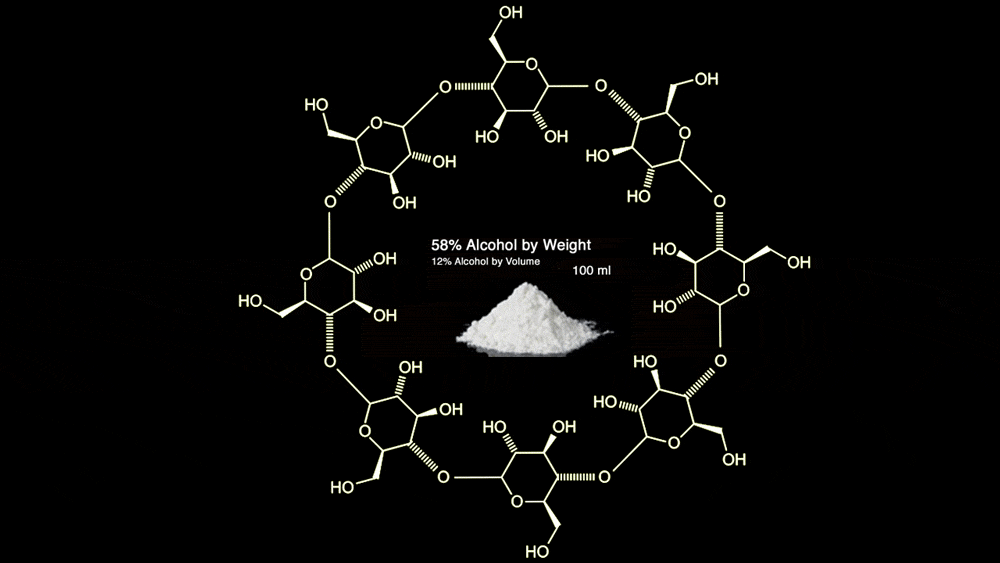The alcohol blog Bevlaw found a release by the Alcohol and Tobacco Tax and Trade Bureau that outed “Palcohol.” Their approved product is “powdered alcohol.” Update: The bureau made the approval “in error.” No powdered alcohol for you.
BUT WHAT IS THIS WITCHCRAFT?

It’s a family of simple carbohydrates called cyclodextrins. Cyclodextrins are molecular doughnuts (or cronuts if you’re willing to wait in that line) — a few sugar molecules in a ring. They’re fun because their interiors are hydrophobic, but the exteriors are hydrophilic. By shoving other molecules inside the hole, you can turn substances that normally don’t dissolve in water into soluble substances. This is the realm of supramolecular chemistry that deals with collections of molecules, and it’s a form of nanotechnology.
They’re made from starch, which is perfectly safe. By why encapsulate ethanol? It is already highly soluble. They seem to have no use case, unless you think of times when it’d be useful not to carry around a bottle, such as smuggling alcohol, which their website has enthusiastically promoted.
What’s worse than going to a concert, sporting event, etc. and having to pay $10, $15, $20 for a mixed drink with tax and tip? Are you kidding me?! Take Palcohol into the venue and enjoy a mixed drink for a fraction of the cost.
Cyclodextrins have been known about for over a century, but until recently the average person didn’t interact with them. After they were well characterized, they began appearing in many products. Medicine that normally wouldn’t dissolve in water or would break up too quickly on its own was soon packaged inside cyclodextrins. Febreeze uses a cyclodextrin to entrap bad smell molecules. Cyclodextrins are used to make low-fat products.

A patent for making powdered alcohol was issued in 1974. In 2007, in the Netherlands some students brewed up Booz2Go — powdered alcohol along with baking soda, citric acid and lime flavor. The baking soda and citric acid produced a nice fizziness. Booz2Go alcopop powder (3% alcohol) was sold to anyone under 16 for just $2 a packet because it fit through a legal loophole in Netherlands’ law. However, US laws don’t have that loophole. But beyond the news coverage, there’s been no actual sign of Booz2Go. Will Palcohol go the same way as Booz2Go, or will their legit status with regulators allow it to actually reach consumers?
Imagine future brunch, salt, pepper, and alcohol powder on the table. Bloody Marys and Screwdrivers with no burn of cheap vodka. An Irish Coffee without the taste of the Irish? Or maybe you’re hiding your alcoholism, with a flick of your sleeve you can turn that wine into port. Do a line of rum with a flavored drip. A portable alcohol inhaler, take a puff at work. The hazards of Palcohol aren’t pharmacological, technological, nor regulatory. This is a social problem. Can our country handle omnipresent and nearly invisible booze? Will those airport microwave scanners migrate to the stadium to ensure we’ll buy their overpriced drinks? Will we be able to personally handle it? Rehab ain’t free, nor is a stay at the hospital.
Have fun; try not to die.


